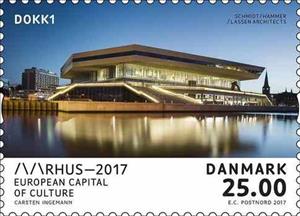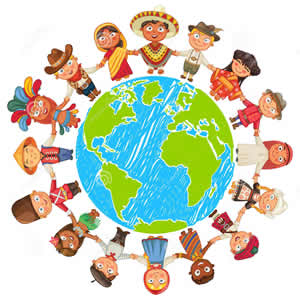Stamp: Dokk1 Culture House (Denmark 2017)
Dokk1 Culture House (Denmark 2017)
30 March (Denmark ) within release Aarhus - European capital of culture 2017 goes into circulation Stamp Dokk1 Culture House face value 25 Danish krone
| Stamp Dokk1 Culture House in catalogues | |
|---|---|
| Michel: | Mi: DK 1918 |
| AFA number: | AFA: DK 1896 |
Stamp is square format.
Dokk1 culture house With the New libraryAlso in the issue Aarhus - European capital of culture 2017:
- Stamp - Moesgaard Museum face value 25;
- Stamp - The Iceberg face value 25;
- Stamp - Dokk1 Culture House face value 25;
- Stamp - Aarhus City Hall face value 25;
- Stamp - ARoS Aarhus Kunstmuseum face value 25;
|
Data entry completed
83%
|
|
|---|---|
| Stamp Dokk1 Culture House in digits | |
| Country: | Denmark |
| Date: | 2017-03-30 |
| Size: | 25.5 x 25.5 |
| Emission: | Commemorative |
| Format: | Stamp |
| Face Value: | 25 Danish krone |
Stamp Dokk1 Culture House it reflects the thematic directions:
Architecture (Latin architectura, from the Greek ἀρχιτέκτων arkhitekton "architect", from ἀρχι- "chief" and τέκτων "builder") is both the process and the product of planning, designing, and constructing buildings and other physical structures. Architectural works, in the material form of buildings, are often perceived as cultural symbols and as works of art. Historical civilizations are often identified with their surviving architectural achievements.
A building or edifice is a structure with a roof and walls standing more or less permanently in one place, such as a house or factory. Buildings come in a variety of sizes, shapes and functions, and have been adapted throughout history for a wide number of factors, from building materials available, to weather conditions, to land prices, ground conditions, specific uses and aesthetic reasons. Buildings serve several needs of society – primarily as shelter from weather, security, living space, privacy, to store belongings, and to comfortably live and work. A building as a shelter represents a physical division of the human habitat (a place of comfort and safety) and the outside (a place that at times may be harsh and harmful).
A culture is a way of life of a group of people--the behaviors, beliefs, values, and symbols that they accept, generally without thinking about them, and that are passed along by communication and imitation from one generation to the next. Culture is symbolic communication. --the behaviors, beliefs, values, and symbols that they accept, generally without thinking about them, and that are passed along by communication and imitation from one generation to the next. Culture is symbolic communication.



